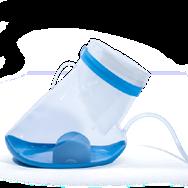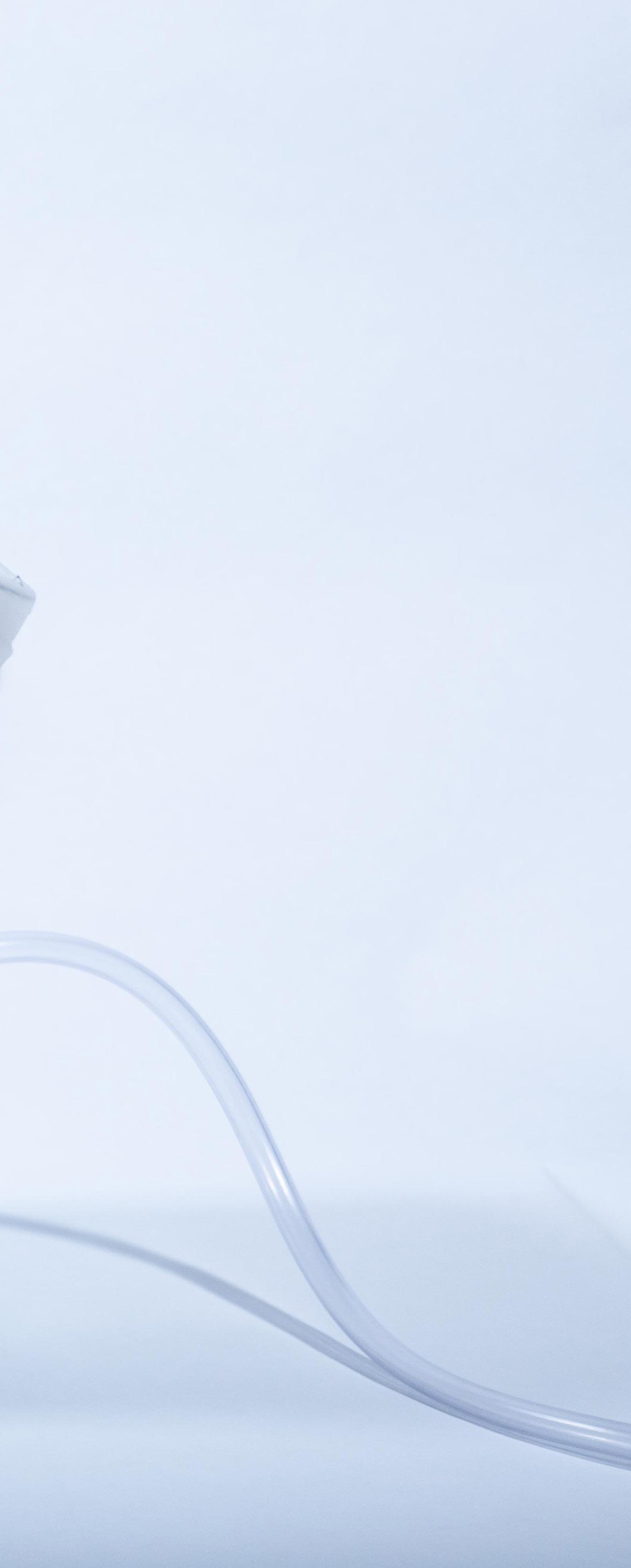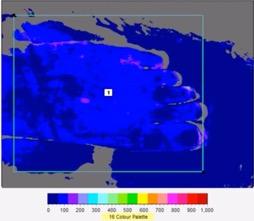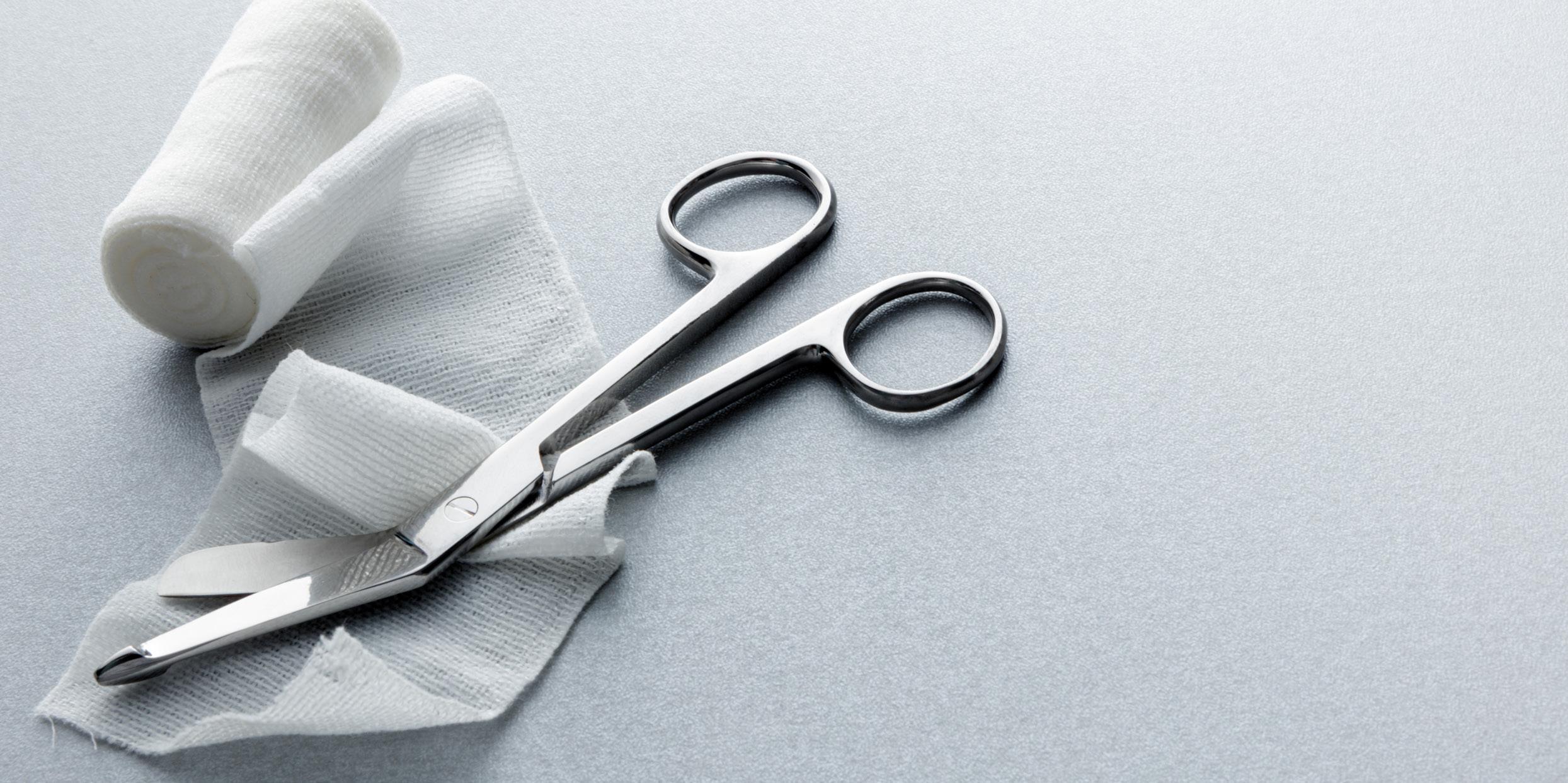FLOWOX™


Non-invasive solution to improve mobility, heal wounds and prevent amputation
post@dmedical.no dmedical.no
We are a significant supplier in the health care market. We provide several different products within the following product categories: hygiene, surgery, waste management and rehabilitative treatment.
Together we can create a safer, healthier and more hygienic life.
Our Shared Responsibility
We care about our effect on the environment and the community, therefore we set strict demands to ourselves and how we operate our business. DMedical is a "Miljøfyrtårn" environmentally certified company. Our goal is to continuously work towards preventing pollution from our own operations and the products we supply.
As a member of Ethical Trade Norway, we work purposefully to safeguard human and worker rights, as well as society and the environment in our collaboration with our partners. We want to help ensure decent working and environmental conditions throughout the supply chain.
As a member of "Grønt Punkt Norge" we follow strict guidelines and instructions for packing and utilizing materials during our transportation.




Clinical Background
FlowOx™
CLINICAL BACKGROUND
FlowOx™ is recommended for patients who suffer from blood flow deficiencies in the lower limbs.
Which Patients can benefit from FlowOx™...........................06
Peripheral Arterial Disease............07
What Problems are Caused by Ischemia?..........................................08
The Fontaine Classification ..............10

dmedical.no DMedical AS 2
Read more at www.dmedical.no ”
FLOWOX™
06


Home Treatment
Clinical Data and Evidence
FlowOx™ is a non-invasive treatment, designed for patients to operate in their own homes.
FlowOx™ the Technlogy.........................12
FlowOx™ the Equipment.......................15
FlowOx™ the Treatment.........................17
Through the years, the science behind the mechanisms of action with FlowOx™ have been carefullly studied. In this brochure we present the key reports and studies.
The Scientific Journey.................20
Studies on the Acute Effect of INP Therapy on Blood Flow Parameters...........................22
Blood Flow Parameters with INP Mechanism of Action with FlowOx™ .................................24
Flow Mediated Dilation & Shear Stress Mechanism of Action with FlowOx™..............26
Treament with INP for Intermittent Claudication A randomized controlled trial (RCT) ............................................28
Impact on Secondary Clinical Endpoints

Wound
Published
DMedical AS post@dmedical.no / +47 45 39 33 87 3 CLINICAL DATA AND EVIDENCE FLOWOX™
healing & leg ulcers.........32
papers on FlowOx™ and INP.......................35
With FlowOx™
FLOWOX™ 12 18

FlowOx™ is an Intermittent
Negative Pressure Therapy
FlowOx™ is a revolutionary new technology for the treatment of reduced peripheral circulation. The technology is based on a tested and gentle intermittent negative pressure technology.


dmedical.no DMedical AS 4 FLOWOX™
FLOWOX™



A non-invasive, non-sterile medical device, designed for patients to operate in their own homes.
DMedical AS post@dmedical.no / +47 45 39 33 87 5
FLOWOX™
CE Marked (CE 2460)


Which patients
Can benefit from FlowOx™?
CLINICAL BACKGROUND
FlowOx™ is indicated for the treatment of the following conditions in adults over the age of 18:
1. Peripheral Arterial Disease such as intermittent claudication, rest pain or wounds.
2. Diabetic and non-diabetic arteriophatic foot- and leg ulcers
3. Foot and lower leg ulcers of mixed aetiology associated with immobility such as paraplegia following spinal injury
dmedical.no DMedical AS 6
FLOWOX™


Peripheral Arterial Disease (PAD)
Severe cases of narrowing or blockage of the arteries in the legs or lower extremities
CLINICAL BACKGROUND
Arteriosclerosis
Arteriosclerosis occurs when the blood vessels that carry oxygen and nutrients from the heart to the rest of the body (arteries) become thick and stiff — sometimes restricting blood flow to the organs and tissues. Healthy arteries are flexible and elastic.
This buildup of plaque, also known as atherosclerosis, narrows or blocks blood flow, reducing circulation of blood to the legs, feet, or hands.
Peripheral Arterial Disease
PAD is a common circulatory problem in which narrowed arteries reduce blood flow to the limbs. When developing PAD, the extremities — usually the legs — does not receive enough blood flow to keep up with the demand.
Intermittent Claudication
Claudication is pain caused by too little blood flow to muscles during exercise. Most often this pain occurs in the legs after walking at a certain pace and for a certain amount of time — depending on the severity of the condition. The pain usually isn't constant, it begins during exercise and ends with rest.
Critical Limb Ischemia (CLI)
Arteriosclerosis is the main cause for PAD. PAD may be asymptomatic, or symptomatic causing intermittent claudication or CLI.
CLI is the advanced stage of PAD, which results from a progressive thickening of an artery's lining (caused by a buildup of plaque). The clinical defintion of CLI is rest pain and/or arterial wounds. This is a chronic disease where there is a significant reduction in blood flow to the limbs, which can lead to tissue death, gangrene, and amputation.
DMedical AS post@dmedical.no / +47 45 39 33 87 7
FLOWOX™
Registered CLI/PAD Cases in Europe Norway CLI 33 000 PAD 88 000 Germany, UK, Sweden, Finland, Denmark CLI 1 710 000 PAD 12 287 000
4,000
Surgical procedures per year
NOK 100 000
Per patient annually
800
Amputations per year
NOK 500-800 million
Annual amputation cost

What problems are caused by ischemia?
Ischemia is lack of oxygen and other nutrients, and reduced removal of metabolites, due to reduced blood flow. This condition can cause pain, and lead to unhealing wounds and gangrene.
Reduced quality of life
Living with ischemia and having a chronically poor peripheral circulation has shown a significant and accelerating negative impact on patients’ quality of life.
The condition causes patients to struggle with discomfort, pain and a lack of mobility. This results in an increasing use of pain medication and a limited ability to engage in physical activities.
Additionally, this patient group has limited options for treatment (often limited to palliative care).
Financial challenges
The financial burden of treating patients with insufficient peripheral microcirculation is extensive and increasing:
The annual cost of treating chronic wounds in home care amounts to NOK 100,000 per patient1
Approximately 4,000 surgical procedures (revascularizations) are performed on patients with reduced peripheral blood circulation. The number is increasing by about 5 % per year.2

dmedical.no DMedical AS 8 FLOWOX™
CLINICAL BACKGROUND


More than 800 amputations are carried out annually in Norway and the cost of this is NOK 500-800 million.3
It is expected that the societal cost of reduced macro- and microcirculation will increase significantly with the aging population and the increased prevalence of patients with diabetes.
What are the effects of reduced macro- and microcirculation?
Microcirculation is the blood flow through the smallest arteries in the circulatory system.
Macrocirculation is the circulation of blood to and from the organs, as distinguished from microcirculation.
Reduced macro- and microcirculation can lead to lack of nutrition, oxygenation, and reduced removal of metabolites from the tissue.
This may cause the following:
• Ischemic pain
• Reduced local immune function and thereby increased risk of infections
• Reduced ability to produce collagen and thereby limiting the tissue’s ability to heal itself.
Collectively, this reduces the body’s ability to form new blood vessels and its ability to heal wounds.
Over time, the condition will become chronic and progressive, increasing the need for long term pain management, wound healing, and palliative care. The condition often deteriorates to a stage where amputation is inevitable.

Sources
1. Jorunn Hagen Rønsen; UiO 2012: Costs for the treatment of chronic leg ulcers in home nursing.
2. Wendt K, et al. BMJ Open 2017;7
3. Otivio.
DMedical AS post@dmedical.no / +47 45 39 33 87 9 FLOWOX™


The Fontaine Classification
A system used to categorize the severity of peripheral arterial disease (PAD) based on symptoms.
The most used classifications of lower extremity PAD are Fontaine and Rutherford.
The Fontaine Classification system is a widely used method for categorizing the severity of PAD based on the symptoms experienced by individuals. It was first introduced in 1954 by Dr. Paul Fontaine and has since become a valuable tool for healthcare professionals in diagnosing and managing PAD.
The Classification system includes five stages, ranging from asymptomatic (Stage I) to severe tissue damage (Stage IV). By identifying the stage of PAD, healthcare providers can determine appropriate treatment options and help improve quality of life for those living with the disease.
Stage I: Asymptomatic
No symptoms are present, but there may be evidence of PAD on diagnostic tests.
Stage IIA: Mild claudication
Symptoms include cramping, pain or fatigue in the legs during exercise that improves with rest.
Painfree walking distance > 200 m
Stage IIB: Moderate claudication
Symptoms are similar to Stage IIa, but they are more severe and occur with less exercise.
Painfree walking distance < 200 m
Stage III: Rest pain
Pain occurs in the legs or feet at rest, usually at night, and is relieved by dangling the legs over the side of the bed.
Stage IV: Ulceration or gangrene
The most severe stage, with non-healing wounds or gangrene (tissue death) present in the feet or toes.
It is important to note that not all individuals with PAD progress through all stages, and treatment options may vary based on the severity of symptoms.
dmedical.no DMedical AS 10 CLINICAL BACKGROUND FLOWOX™


The Treatment Stages of PAD
Following the Fontaine classification
Grade PAD Fontaine Stages
Stage I
Stage IIA
Stage IIB
Stage III
Diet changes
Exercise Quit smoking
Secondary preventive drugs
Diet changes
Exercise Quit smoking
Secondary preventive drugs
Diet changes
Exercise Quit smoking
Secondary preventive drugs
Endovascular or open surgical treatment
Diet changes
Exercise Quit smoking
Secondary preventive drugs
Endovascular or open surgical treatment
Secondary preventive drugs


Patients can start using FlowOx at this stage, as supplement to standard care.
FlowOx™ is a supplement to standard care. There is a universal scientific consensus that 2/3 patients are unable to attend SET.

FlowOx™ is a supplement to standard care. There is a universal scientific consensus that 2/3 patients are unable to attend SET.
Stage IV
Endovascular or open surgical treatment

Relevant for patients that are not amenable for endovascular or open surgical treatment. Post Revascularization
Diet changes
Exercise Quit smoking
Secondary preventive drugs

FlowOx™ is an addition to endovascular treatment when increased risk of restenosis. Supplement after bypass surgery.
DMedical AS post@dmedical.no / +47 45 39 33 87 11
Standard Treatment Option to standard treatment Rationale (FlowOx™ treatment)
FLOWOX™
FlowOx™

Passive vascular exercise
Increased walking distance
Improved quality of life
FlowOx™ is an
Intermittent Negative Pressure Therapy
FlowOx™ is a novel CE Certified, Class IIa Medical Device which improves blood flow to patients’ legs by applying a negative oscillating pressure. It is comfortable, it can be used while patients are at rest and there is no barrier for regular use. It can transiently increase blood flow in lower extremities by about 60% in the small arteries and more than 100% in the capillaries. FlowOx™ is a non-invasive, non-sterile device enabling patients to treat themselves in their own home.
FlowOx™ is a simple to use treatment alternative for both patients and health care institutions.
FlowOx™ helps to improve the quality of life for patients with a lifelong treatment plan with a high number of doctors appointments, i.e. PAD patients who suffer from leg pain and wounds.
FlowOx™ help the medical care by reducing the time and cost spent on PAD patients with a life long treatment plan.

dmedical.no DMedical AS 12
FLOWOX™
THE TECHNOLOGY


HOME TREATMENT
FlowOx™
Enables active home treatment
Otivio has developed FlowOx™ for patients suffering from the effects of PAD such as leg pain and chronic wounds. Early long-term testing documents increased blood flow, pain reduction, wound healing and amputation prevention.
FLOWOX ™
Home Treatment
FlowOx™ is large for a boot, but small for a medical appliance. It is perfectly fine to use at home, and can easily be tidied away if needed. It is also easy to use simply with the press of a button, so no assistance is needed.

The Technology
Intermittent Negative Pressure (INP)
• Intermittent negative pressure (evacuating 5% of the air, -40mmHg)
• Intermittent suction draws blood to the leg and skin while allowing blood to return during the normal pressure phase (0 mmHg)


DMedical AS post@dmedical.no / +47 45 39 33 87 13
FLOWOX™


dmedical.no DMedical AS 14 FLOWOX™


HOME TREATMENT
FlowOx™ Equipment
A non-invasive home treatment solution



Control Unit
Multi patient use
- multiple treatment cycles
Pressure Chamber (Boot): Single patient use –multiple treatment cycles
Technical Specs
• Control Unit (CU) 2,9 kg
• Packaged CU 4,5 kg (incl. power supply)
• Dimension Packed CU 38 x 35 x 56 cm
• Pressure Chamber (PCH) 2,1 kg
• Packaged PCH 4,5 kg (incl. assembly parts)
• Dimension Packed PCH 57 x 31 x 48 cm
Consumables
Strap, seal, padding are consumables that will need to be replaced after each treatment cycle – 180 hours.
DMedical AS post@dmedical.no / +47 45 39 33 87 15
FLOWOX™
FLOWOX ™

FLOWOX™
Intermittent Negative
Pressure Therapy

Pressure chamber
Strap
Positioner
dmedical.no DMedical AS 16
FLOWOX™


HOME TREATMENT
How does the FlowOx™ treatment work?
FlowOx™ works by “exercising” the peripheral blood circulation.
How?
Through repeating shifts between a light negative pressure (-40 mm Hg) and normal atmospheric pressure, the natural dynamics and function of the vascular system is exercised. Everything from the arteries to the capillaries in the outer layers of the skin experience the fluctuations and thereby improving supply of oxygen and nutrients which is essential for maintaining and restoring the normal function of the skin and musculature.
FlowOx™ thus addresses the underlying problems caused by poor peripheral circulation.

Intermittent negative pressure applied by FlowOx™.

DMedical AS post@dmedical.no / +47 45 39 33 87 17
FLOWOX™
Seal
FLOWOX ™
Padding
Clinical Data and Evidence
FlowOx™, INP Therapy, Blood Flow
Blood Flow
Flow Mediated Dilation and Shear Stress
Improved walking capacity

The mechanisms of action of FlowOx™ have been carefully studied through the years
FlowOx™ is indicated for the treatment of PAD , e.g. with intermittent claudication or rest pain, and/or wounds. Other relevant indications include foot and lower leg ulcers of mixed aetiology associated with immobility such as paraplegia following spinal injury, and diabetic and non-diabetic arteriopathic foot and leg ulcers.
Early long-term testing documents increased blood flow, pain reduction, wound healing and amputation prevention.
Here is a selection of the most relevant studies.
• The acute effect of INP Therapy on Blood Flow Parameters
• The Scientific Journey of FlowOx™
• Blood flow parameters with INP Mechanism of action with FlowOx™
• Flow Mediated Dilation & Shear Stress Mechanism of action with FlowOx™
• Improved walking capacity: Publications of the impact on primary clinical endpoints

dmedical.no DMedical AS 18
FLOWOX™


DMedical AS post@dmedical.no / +47 45 39 33 87 19 FLOWOX™


The Scientific Journey of FlowOx™
For a complete overview of all pubications please refer to page 35.

1934
STUDY
The idea of "Intermittent Negative Pressure" was first conceived in the 1930’s by Herman and Reid.
Hermann and Reid; Arch Surg. 1934;29(5):697-704
2010 Development of the FlowOx™ Concept in Norway.
2016
STUDY
Application of intermittent negative pressure on the lower extremity and its effect on macro- and microcirculation in the foot of healthy volunteers.
Author: Sundby et. al. 2016.
2017
STUDY
The acute effects of lower limb intermittent negative pressure on foot macro- and microcirculation in patients with peripheral arterial disease.
Author: Sundby et. al. 2016.
dmedical.no DMedical AS 20 FLOWOX™


2019
STUDY
The acute effects of lower limb intermittent negative pressure on foot macro-and microcirculation in patients with peripheral arterial disease.
Author: Hoel et. al. 2019.
2020
STUDY
Treament with intermittent negative pressure (INP) for intermittent claudication (Impact on primary clinical endpoints) A Randomized Controlled Trial (RCT)
Author: Hoel et. al. 2020.
2021
STUDY
Effects of intermittent negative pressure treatment on circulating vascular biomarkers in patients with intermittent claudication Biomarkers.
2019
STUDY
Fluctuation in shear rate, with unaltered mean shear rate, improves brachial artery flow-mediated dilation in healthy, young men.
Author: Holder et. al. 2019.
2021
STUDY
Follow-up trial: Walking distance after 24 weeks. Treatment with intermittent negative pressure (INP) for intermittent claudication (IC) (Impact on primary clinical endpoints) 12 week follow up trial.
Author: Hoel et al. submitted 2021.
2021
STUDY
Economic model to examine the cost-effectiveness of FlowOx home therapy compared to standard care in patients with peripheral artery disease.
Author: Ezeofor et al., 2021.
DMedical AS post@dmedical.no / +47 45 39 33 87 21 FLOWOX™
Author: Hoel et al. submitted 2021.


Studies on the Acute Effect
Of INP Therapy on Blood Flow Parameters
Over the past few years, INP Therapy has gained significant attention for its potential to improve cardiovascular health The following studies from 2016, 2017, and 2019 focus on the acute effect of INP therapy on blood flow parameters.
The effects of FlowOx™ and INP are based on basic physical principles and have been well-researched and documented in clinical studies.
These studies have been done on both healthy individuals and PAD patients. Both results have shown positive effects of FlowOx™.
Results from studies focused on determining the optimal pressure level that would achieve the desired result without causing unnecessary pain or stress to the patient.
The FlowOx™ treatment is suitable for patients who are struggling with ischemic wounds, painful walking, painful resting and painful, slow recovery from surgical revascularization.
Read the complete studies at www.flowox.com

dmedical.no DMedical AS 22
FLOWOX™
CLINICAL DATA AND EVIDENCE

STUDY
STUDY CONCLUSION
2016
Application of intermittent negative pressure on the lower extremity and its effect macroand microcirculation in the foot of healthy volunteers.
Author: Sundby et. al. 2016.
2017
The acute effects of lower limb intermittent negative pressure on foot macro- and microcirculation in patients with peripheral arterial disease
Author: Sundby et. al. 2016.
2019
The acute effects of different levels of intermittent negative pressure on peripheral circulation in patients with peripheral artery diesase.
Author: Hoel et. al. 2019.
2019
Fluctuation in shear rate, with unaltered mean shear rate, improves brachial artery flow-mediated dilation in healthy, young men.
Author: Holder et. al. 2019.
This study found that application of frequent mild INP of -40 mmHg in the foot in healthy volunteers induced rhythmical fluctuations in blood flow and increased both arterial blood flow velocity and skin blood flow.
This was the first study to describe the effects of INP on skin blood flow and arterial blood flow velocity. The first to compare different sequences of negative pressure oscillations on lower limb perfusion.
The study found that INP increases foot macro- and microcirculatory flow pulsatility. Application of INP resulted in increased mean arterial blood flow velocity.
The study found that INP of -40 and -60 mmHg applied in cycles of 10 sec of negative pressure and 7 sec of atmospheric pressure induced acute increase in arterial and skin blood flow.
The study found that INP induces fluctuations in blood flow and shear rate that improves endothelial function. This may represent a hemodynamic stimulus improving vascular health.
The Holder et al study started to shed light on the longer term mechanism of action for FlowOx™.
DMedical AS post@dmedical.no / +47 45 39 33 87 23 FLOWOX™

Blood Flow Parameters with INP
Mechanism of Action with FlowOx™
CLINICAL DATA AND EVIDENCE
When applying INP in combination with FlowOx™, the level of impact is visible in the skin blood flow and the fluctations in the arterial flow.
These blood flow parameters show the differences in the arteries and veins during the active phase as opposed to the passive phase.
Increased fluctuations in skin blood flow
The pictures on the right show the laser speckle imaging of the skin during FlowOx™ treatment. The active phase photo shows a bright blue color which indicates the increased skin perfusion.
PASSIVE PHASE ACTIVE PHASE


PASSIVE PHASE ACTIVE PHASE
Increased fluctuations in arterial flow
The picture of the active phase shows an increased amplitude from the baseline which indicates an increaced arterial blood flow.



dmedical.no DMedical AS 24
Photo: Ultra sound Doppler measurement: Dorsalis pedis of a PAD patient.
FLOWOX™
Photo: Laser speckle imaging of the skin during FlowOx™ treatment.



FlowOx™ Therapy affects the baseline sequence

The black dotted lines illustrate the measurements of the blood flow when applying intermittent negative pressure.
DMedical AS post@dmedical.no / +47 45 39 33 87 25 FLOWOX™
Sundby et. al. 2016


Flow Mediated Dilation & Shear Stress
Mechanism of Action with FlowOx™
CLINICAL DATA AND EVIDENCE
Treatment with FlowOx™ increases shear stress, which acts as a positive stimulus on the endothelium, resulting in improved tissue perfusion.
For patients with PAD, FlowOx™ increases the capacity of the vasculature, including existing collaterals.

This figure shows the variations in blood flow when applying FlowOx.
Shear Stress

Shear



The vascular endothelium is exposed to a hemodynamic stress generated by the blood flow known as the wall shear stress. Wall shear stress is defined as the force per unit area exerted on the vessel wall by the blood flow and it depends on blood viscosity and the blood flow velocity profile.
Vasodilation is the dilation, or widening, of blood vessels.
Angiogenesis is the growth of new blood vessels.
Arteriogenesis is the remodeling of existing collaterals.

dmedical.no DMedical AS 26
FLOWOX™
Stress Flow INP L-arginine eNOS NO Vasodilation Angiogenesis/ Arteriogenesis Improved tissue perfusion


DMedical AS post@dmedical.no / +47 45 39 33 87 27 FLOWOX™



Treament with intermittent negative pressure (INP) for intermittent claudication
A Randomized Controlled Trial (RCT)
The objective of this study was to investigate the effects of lower extremity INPtreatment for 1 hour two times daily for 12 weeks on the walking distance of patients with intermittent claudication (IC).
Enrollment and allocation
In the enrollment of the claudicant RCT, 85 patients were assessed for eligibility.
72 patients were randomized into 2 groups:
• 38 patients were allocated to -40 mmHg INP treatment
• 34 patients were allocated to -10 mmHg INP treatment.
All patients went through 12 weeks of treatment without knowing what type of group they were in.
72 38 34 -40 mmHg INP Treatment -10 mmHg INP Treatment
Henrik Hoel, MD, Erik Mulder Pettersen, MD, Lars Øivind Høiseth, MD, PhD, Iacob Mathiesen, PhD, Arne Seternes, MD, PhD, and Jonny Hisdal, PhD.
dmedical.no DMedical AS 28
FLOWOX™
CLINICAL DATA AND EVIDENCE
PWD = Pain-Free Walking Distance MWD = Maximal Walking Distance


Results after 12 weeks: Improved walking distance
Treatment with INP for intermittent claudication
The results of the study demonstrate that treatment with -40 mm Hg INP for one hour in the morning and one hour in the evening for 12 weeks resulted in an increase in pain-free walking distance (PWD) compared to sham treatment in patients with IC.
Pain-Free Walking Distance (PWD)
The PWD for the active treatment group showed an increase of 68 meters after 12 weeks, while the sham treatment group showed an increase of 18 meters.
Maximal Walking Distance (MWD)
The MWD for the active treatment group showed an increase of 62 meters, while the sham treatment group showed an increase of 20 meters.

Hoel H et al. J Vasc Surg. 2021 DMedical AS post@dmedical.no / +47 45 39 33 87 29 FLOWOX™

Follow-up trial: Walking distance after 24 weeks
Treatment with intermittent negative pressure (INP) for intermittent claudication (IC)
CLINICAL DATA AND EVIDENCE

Hoel H et al. Ann Vasc Surg. 2021
The Claudicant RCT Follow-Up trial conducted by Hoel H. et. al. examined the walking distance after 24 weeks of treatment.
Ten patients who received the -40 mmHg INP treatment participated in the Follow-Up trial. These results provide valuable insights into the efficacy of the FlowOx™ therapy for improving walking distance in patients with IC.

The results showed a mean increase in the Pain-Free Walking Distance (PWD) of 100 meters after 24 weeks of treatment with the FlowOx™ device (p=0.006).
Additionally, the Maximal Walking Distance (MWD) showed a mean increase of 183 meters after 24 weeks (p=0.012). 10 patients given the -40 mmHg INP treatment were enrolled in the Follow up trial.

dmedical.no DMedical AS 30
Hoel, Henrik; Pettersen, Erik Mulder; Høiseth, Lars Øivind; Mathiesen, Iacob; Seternes, Arne; Hisdal, Jonny
FLOWOX™
RESULTS OF FOLLOW-UP TRIAL
100 Meter Increase
Pain-free Walking Distance

RESULTS OF FOLLOW-UP TRIAL
183 Meter Increase Maximal Walking Distance

DMedical AS post@dmedical.no / +47 45 39 33 87 31 FLOWOX™



Impact on Secondary Clinical endpoints
Wound Healing & Leg Ulcers
CLINICAL DATA AND EVIDENCE
Conducting research on wound healing and foot ulcers is a very complex and difficult process due to several factors:
» Complexity of the condition
» Variability in patient populations
» Difficulty in measuring outcomes
» Limited evidence base
Despite these challenges, there have been promising results from physiological case reports that have explored the use of FlowOx™ treatment for wound healing and foot ulcers. These studies offer a glimpse into the potential benefits of this treatment and suggest the need for further research in this area.
dmedical.no DMedical AS 32
FLOWOX™


Impact on Secondary Clinical endpoints
Reports on using INP therapy on wounds & leg ulcers
Case Report
PHYSIOLOGICAL REPORTS
The effects of intermittent negative pressure on the lower extremities´ peripheral circulation and wound healing in four patients with lower limb ischemia and hard-to-heal leg ulcers: a case report
Øyving H. Sundby1,2,3, Lars Ø. Høiseth1,4, Iacob Mathiesen3, Jørgen J, Jørgensen2,5 & Jonny Hisdal1
RESULT
“In these cases, involving patients with hard-to-heal leg and foot ulcers, observed that INP therapy improved ulcer healing considerably.”
“Foot perfusion improved after completion of 8 weeks of INP-therapy.”
Case Report
PHYSIOLOGICAL REPORTS
Intermittent mild negative pressure applied to the lower limb in patients with spinal cord injury and chronic lower limb ulcers: a crossover pilot study
Øyving Heiberg Sunby1,2,3, Ingebjørg Irgens2,4, Lars Ø. Høiseth1,5, Iacob Mathiesen3, Eivind Lundgaard4, Hanne Haugland6, Harald Weedon-Fekjær7, Jon O. Sunhagen8, Gunnar Sandbæk2,9, Jonny Hisdal1
RESULT
“INP therapy can be used as a home-based treatment for patients with SCI and chronic lower U limb ulcers.”
DMedical AS post@dmedical.no / +47 45 39 33 87 33 FLOWOX™


dmedical.no DMedical AS 34 FLOWOX™


Published Papers
On FlowOx™ and INP
1. Application of intermittent negative pressure on the lower extremity and its effect on macro- and microcirculation in the foot of healthy volunteers, Sundby et al; Physiol Rep, 4 (17), 2016
2. The acute effects of different levels of intermittent negative pressure on peripheral circulation in patients with peripheral artery disease; Hoel et al.; Physiol Rep, 7 (20), 2019
3. The acute effects of lower limb intermittent negative pressure on foot macro- and microcirculation in patients with peripheral arterial disease; Sundby et al.; PLoS ONE 12(6): e0179001.
4. Intermittent negative pressure applied to the lower limb increases foot macrocirculatory and microcirculatory blood flow pulsatility in people with spinal cord injury; Sundby et al.; Spinal Cord https://doi.org/10.1038/s41393017-0049-8
5. Fluctuation in shear rate, with unaltered mean shear rate, improves brachial artery flow-mediated dilation in healthy, young men; Holder et al.; J Appl Physiol 126: 1687–1693, 2019
6. A randomized controlled trial of treatment with intermittent negative pressure for intermittent claudication, Hoel et al.; Journal of Vascular Surgery, vol. 73, no. 5
7. Lower Extremity Intermittent Negative Pressure for Intermittent Claudication. Follow-Up after 24 Weeks of Treatment, Hoel et al.; Annals of Vascular Surgery
8. The effects of intermittent negative pressure on the lower extremities’ peripheral circulation and wound healing in four patients with lower limb ischemia and hard-to-heal leg ulcers: a case report; Sundby et al.; Physiol Rep, 4 (20), 2016
9. Intermittent mild negative pressure applied to the lower limb in patients with spinal cord injury and chronic lower limb ulcers: a crossover pilot study; Sundby et al.; Spinal Cord (2018) 56:372–381
10. Economic model to examine the cost- effectiveness of FlowOx™ home therapy compared to standard care in patients with peripheral artery disease; Ezeofor et al; PLoS ONE 16(1): e0244851
11. The FlowOx™ device for the treatment of peripheral artery disease: current status and future prospects; Hoel, Hisdal; Expert Review of Medical Devices, 18:3, 217-220
12. Patient and Clinician experiences and opinions of the use of a novel home use medical device in the treatment of peripheral vascular disease - a qualitative study; Sedgwick et al.; https://doi.org/10.21203/rs.3.rs-290345/v1
13. Effects of intermittent negative pressure treatment on circulating vascular biomarkers in patients with intermittent claudication; Hoel et al.; Vascular Medicine 1–8 2021
14. The Effect of 12-Week Treatment with Intermittent Negative Pressure on Blood Flow Velocity and Flowmotion, Measured with a Novel Doppler Device (Earlybird). Secondary Outcomes from a Randomized Sham-Controlled Trial in Patients with Peripheral Arterial Disease; Mulder Pettersen et al.; Annals of Vascular Surgery, April 22, 2022
Read the complete studies at www.flowox.com
DMedical AS post@dmedical.no / +47 45 39 33 87 35 FLOWOX™





post@dmedical.no +47 45 39 33 87 www.dmedical.no Bjørnerudveien 24 1266 Oslo, Norway This brochure is recycled as carton/paper waste. This brochure is printed on Nordic Swan Eco labelled paper.





















































